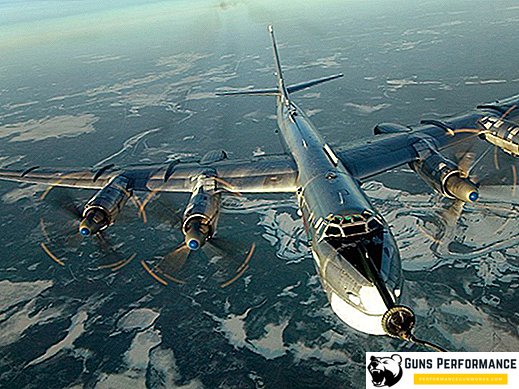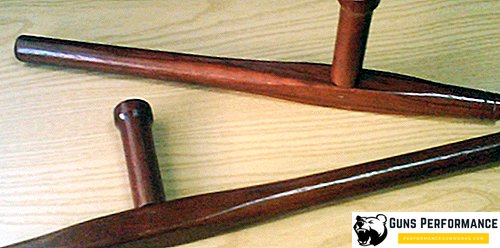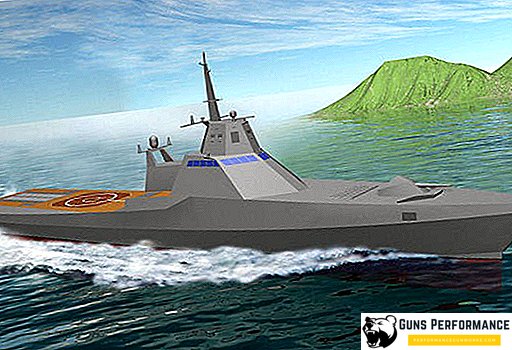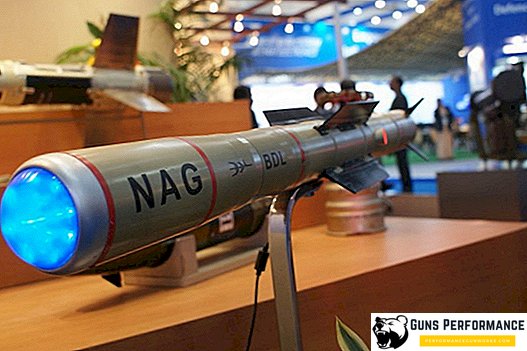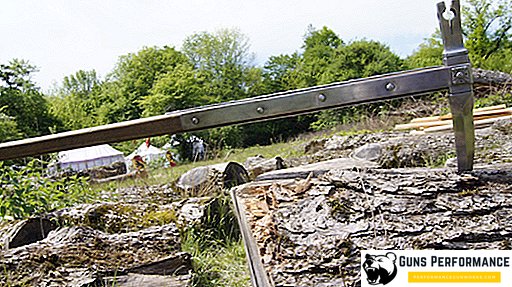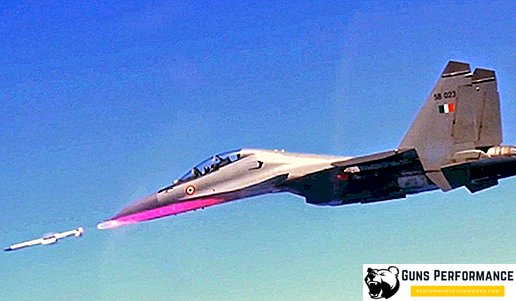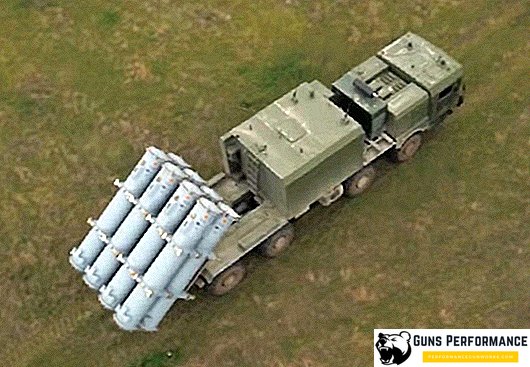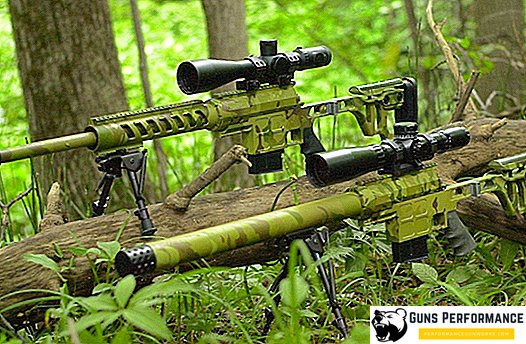The MQ-1 Predator is an American remote-controlled UAV (RPA) built by General Atomics. Originally conceived in the early 1990s for aviation reconnaissance, the Predator can be equipped with cameras and other sensors. Subsequently, he was upgraded, having the opportunity to carry two Hellfire AGM-114 missiles or other ammunition. In 1995, the drone was put into service, he participated in hostilities in Afghanistan, Pakistan, Bosnia, Serbia, Iraq, Yemen, in the Libyan civil war in 2011, in the 2014 intervention in Syria and Somalia.
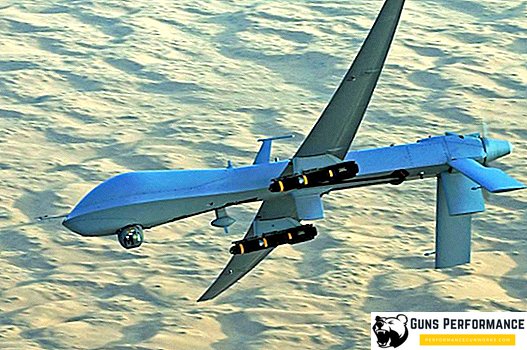
Development
The CIA and the Pentagon began experimenting with unmanned reconnaissance vehicles (drones) in the early 1980s. The CIA preferred small and lightweight drones, in contrast to the US Air Force, who also saw striking force in UAVs. In the early 1990s, the CIA became interested in Amber UAVs developed by Leading Systems, Inc. Company owner Abraham Karem was formerly the chief designer of the Israeli Air Force, he immigrated to the United States in the late 1970s. Karem has created a quiet engine for UAVs that previously sounded like "lawn mowers in the sky." New development has become known as the "Predator."
General Atomics Aeronautical Systems (GA-ASI) was awarded the development contract for Predator in January 1994. The first flight of the new drone took place on July 3 of the same year in El Mirage (airfield in the Mojave Desert). As a result, three sets of twelve bridges and three ground control stations were acquired from GA-ASI.
From April to May 1995, Predator drones were tested as part of the Roving Sands 1995 drills in the United States. The tests were successful, and the new system was decided to be used in the Balkans in the summer of 1995.
The original Predator system was called the RQ-1 Predator. “R” is the designation of the United States Department of Defense for intelligence, and “Q” refers to an unmanned aircraft system. "1" denotes a UAV as the first of a series of aircraft systems built for unmanned reconnaissance. In 2002, the United States Air Force officially changed the designation to MQ-1 ("M" for multipurpose use) to show its advanced functionality as an armed drone.

Command and Sensor Systems
During the campaign in the former Yugoslavia, the Predator pilot was sitting in a van near the runway of the drone’s operational base. The operator controlled take-off from the runway and climb with radio signals. Over time, control was carried out through military satellite networks associated with the pilot's van. The operator was forced to face a delay of several seconds between the movement of the joysticks and the response of the drone. However, by 2000, the progress of communication systems allowed, at least theoretically, to get rid of this inconvenience. No longer needed to use direct radio signals during the take-off and rise of the Predator. All flight stages could be monitored via satellite communications from any control center, and the CIA proposed to organize the first fully remote Predator flights over Afghanistan, piloted from the agency’s headquarters in Langley.
Avionics and Predator sensors are controlled from the ground station via a forward link data line or through a Ku-band satellite channel for operations out of line of sight. The crew at the ground control station consists of one pilot and two operators. The UAV is equipped with the AN / AAS-52 multispectral targeting system, a color nose camera (usually used by the pilot to control the flight), a variable aperture daytime camera and a variable aperture thermographic camera (for low light). Previously, the Predators were equipped with a synthetic aperture radar for seeing through smoke, clouds or fog, but this system was removed due to lack of demand to reduce weight and save fuel. Cameras capture video in real time, and a synthetic diaphragm radar receives still radar images. The data channel has sufficient bandwidth to broadcast video from two sources simultaneously.
Deployment Method
Each UAV Predator can be disassembled into six main parts and placed in a special container. This allows you to quickly deploy a system and accessories anywhere in the world. The largest component is the ground control station, which is transported by the C-130 Hercules transporter. The Predator satellite base set consists of a 6.1 meter (20 feet) satellite dish and auxiliary equipment. Satellite communication provides communication between the ground station and the UAV beyond the direct line of sight and is a link with communication channels transmitting secondary intelligence data. The RQ-1A drone requires runways of 1,500 by 40 meters (5,000 by 125 feet) of solid surface in clear visibility.
Armed versions
On June 21, 2000, the USAID BIG SAFARI program office began developing options for arming a UAV. As a result, the UAV received reinforced wings and pylons for the installation of ammunition, as well as a laser designator. On February 16, 2001, the RQ-1 conducted the first launch of the AGM-114C Hellfire guided anti-tank missile. The shell successfully hit a tank target. Later in the test series on February 21, 2001, the Predator fired three Hellfire missiles, hitting the fixed tank turret with all three missiles. After the February tests, we moved on to more difficult trials simulating the defeat of moving targets from high altitudes with a more advanced version of SD AGM-114K. As a result, the modification was adopted, and the Predators received a new designation MQ-1A. Since this UAV is relatively quiet, and the Hellfire missiles are supersonic, it can hit the target earlier than she sees it.

Exploitation
As of March 2009, the US Air Force had 195 MQ-1 Predator and 28 MQ-9 Reaper. "Predators" and "Reapers" in 2007 and 2008 in Iraq and Afghanistan fired rockets 244 times. A March 2009 report stated that the US Air Force lost 70 Predators in plane crashes during the entire period of their use, with 55 of them being lost due to equipment failure, operator error, or bad weather conditions. Five were shot down in Bosnia, Kosovo, Syria and Iraq. Another 11 were lost due to accidents in a combat situation.
On October 22, 2013, the remote-piloted MQ-1 Predators and MQ-9 Reaper drones reached a total of 2,000,000 flight hours.
On March 9, 2018, the US Air Force officially "fired" the MQ-1 Predator from operational service. The device was first used in 1995, and in 2011 the last of the 268 predators was taken to the service, of which just over 100 remained in service by the beginning of 2018. Despite the fact that the Predator was gradually replaced by a heavier and more powerful MQ-9 Reaper, it continues to be upgraded to the MQ-1C Gray Eagle standard for the US Army, as well as for several foreign countries.
Modifications
- MQ-1A Predator: early gliders capable of carrying ammunition;
- MQ-1B Predator: later gliders capable of carrying ammunition. Increased air intakes for the Rotax engine;
- MQ-1B Block 10/15: includes updated avionics, upgraded multipurpose targeting system AN / AAS-52, anti-icing equipment, infrared cameras in the bow;
- MQ-1C: The US Army adopted this version as a multipurpose UAV in August 2005. The UAV was renamed the MQ-1C Gray Eagle in 2009.
Specifications
General characteristics
- Operators: three people;
- Length: 8.22 m;
- Wing Span: 14.8 m; MQ-1B Block 10/15: 16,84 m;
- Height: 2.1 m;
- Wing area: 11.5 m2;
- Empty weight: 512 kg;
- Cargo weight: 1020 kg;
- Maximum take-off weight: 1020 kg;
- Powerplant: 1 x Rotax 914F.
Performance
- Maximum speed: 217 km / h;
- Cruising speed: 130-165 km / h;
- Stall speed: 100 km / h;
- Flight radius: 1200 km;
- Flight duration: 24 hours;
- Ceiling: 7620 m.
Armament
Two pendants on which mounted weapons.
Rockets:
- 2 x AGM-114 Hellfire;
- 4 x AIM-92 Stinger;
- 6 x AGM-176.
Avionics:
- ASIP-1C;
- AN / AAS-52;
- AN / ZPQ-1.


